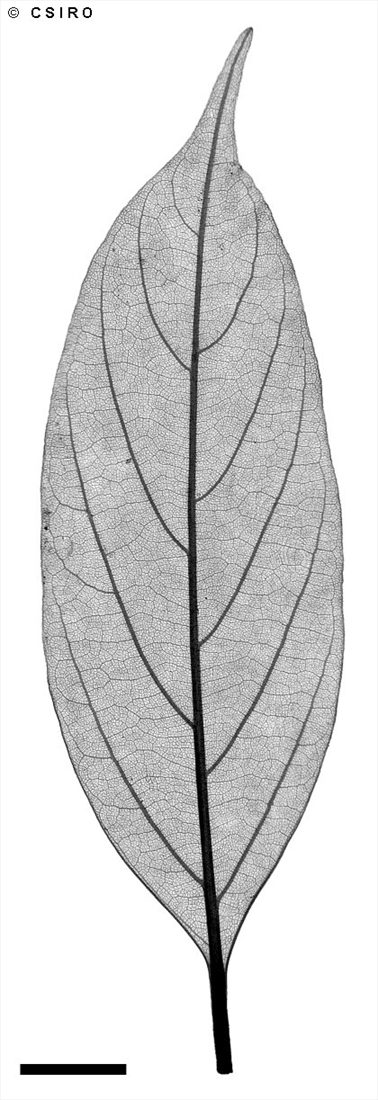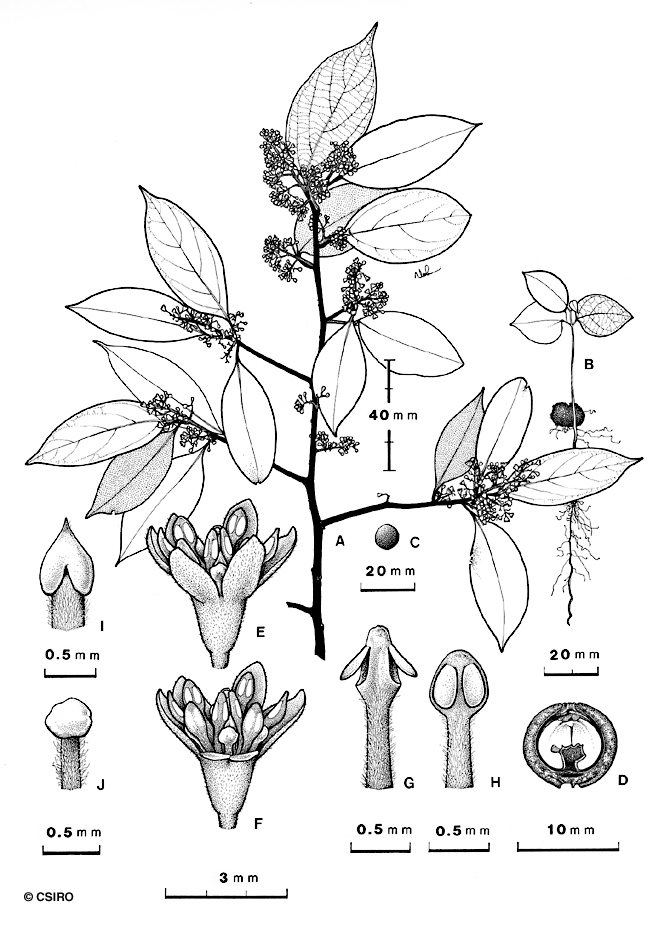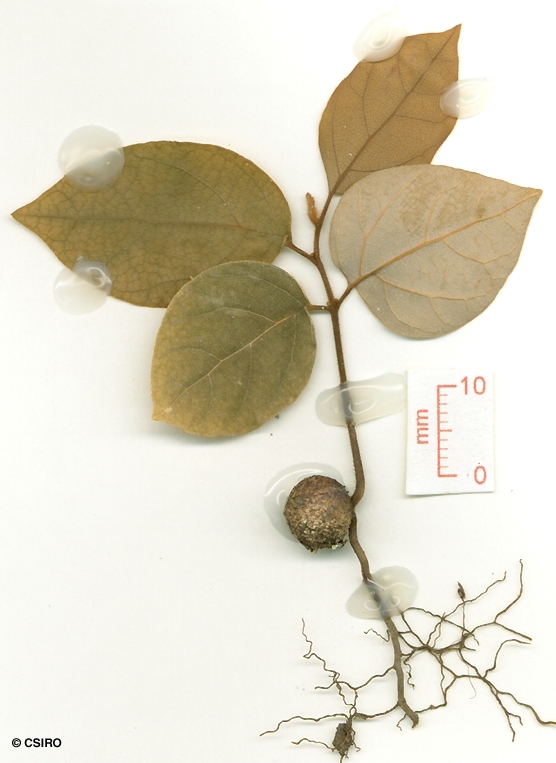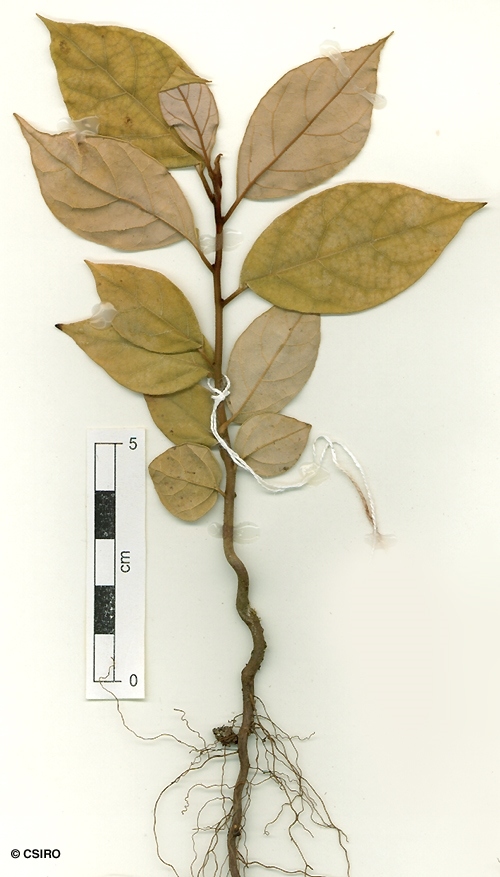Australian Tropical Rainforest Plants - Online edition
Cryptocarya melanocarpa B.Hyland





Hyland, B.P.M. (1989) Australian Systematic Botany 2: 196. Type: B. Gray 2968, Gillies Highway - Boar Pocket Road Junction, 3.ii.1983 (QRS, holotype).
Usually a small tree not exceeding 40 cm dbh.
Twigs fluted, clothed in mainly tortuous, brown, erect hairs which persist even on the older twigs. Leaf blades about 6.5-13.5 x 2-5.5 cm, glaucous on the underside, clothed in mainly straight, white or pale brown, appressed hairs which persist even on the older leaves. Midrib depressed on the upper surface. Petioles channelled on the upper surface. Oil dots visible with a lens.
Fruits globular or depressed globular, about 8-10 x 9-10.5 mm. Cotyledons white, occasionally cream.
First pair of leaves ovate or cordate to almost orbicular, about 16-22 x 13-19 mm, glaucous on the underside. At the tenth leaf stage: leaf blade glaucous on the underside, hairy on the upper surface along the midrib and main lateral veins; oil dots very small, visible only with a lens. Terminal bud, stem and petiole densely covered in short upright hairs. Seed germination time 71 to 311 days.
Fruit eaten by King Parrots, Metallic Starlings and Fruit Pigeons. Cooper & Cooper (1994).
This species scarcely grows large enough to produce millable logs and it is most unlikely that it has ever been utilized. Wood specific gravity 0.75-0.80. Hyland (1989).





